25 of the most important gaming controllers ever
Try gaming without them
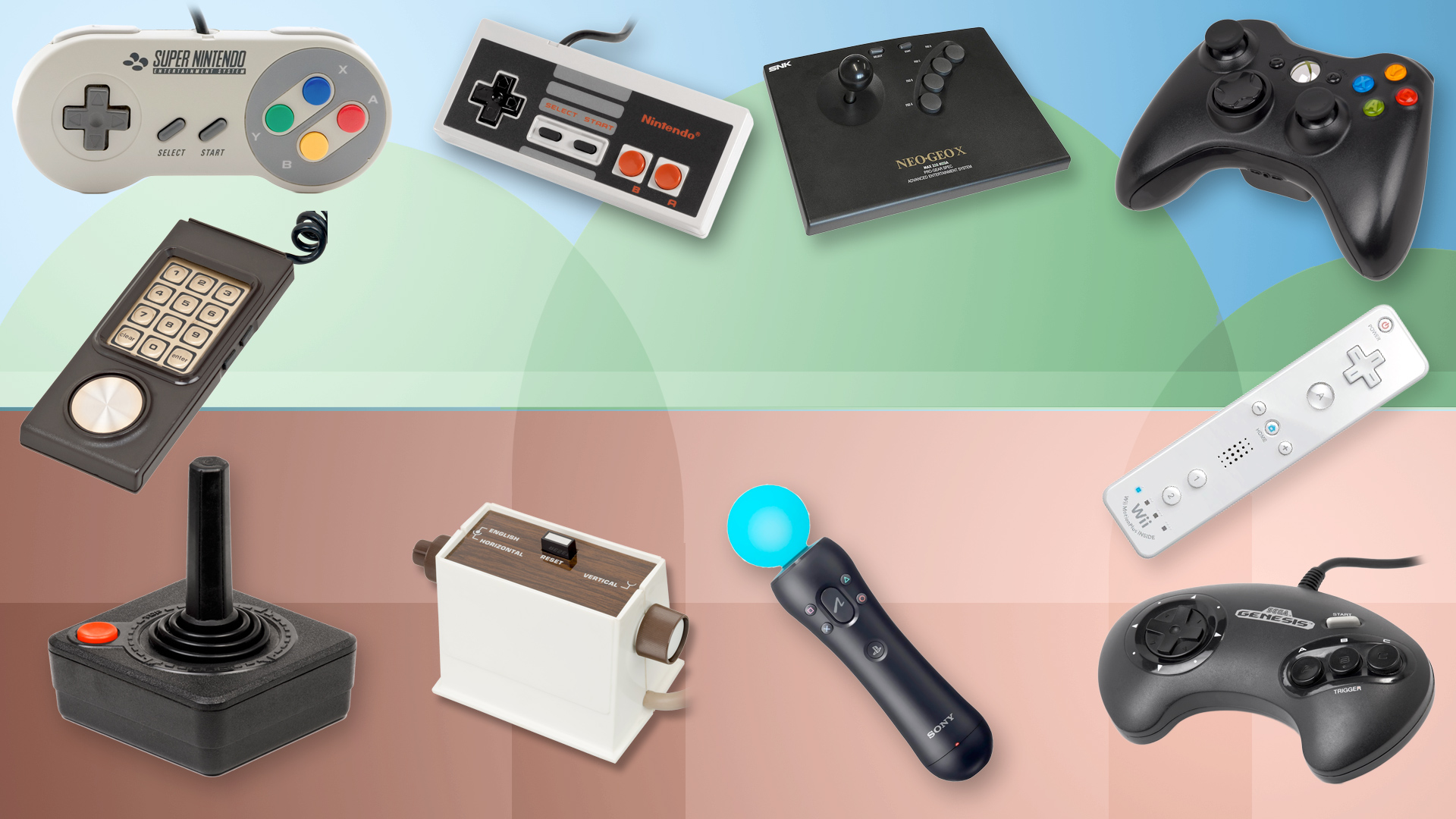
What gets all the glory in the gaming world? New consoles and new games.
But it’s not those things that work on thumb calluses as you spend evening after fruitless evening trying to finish a boss in Dark Souls III. The console controller is the real gatekeeper between you and your games, and as anyone who has bought an awful third-party controller knows: the quality of a gamepad matters.
We’ve dug through console gaming’s history to pick out the 25 most important games console controllers of all time.
There can be only one controller in the top spot, so get ready to spatter your anger all over the comments if you disagree.
- Welcome to TechRadar's Console Gaming Week, celebrating each and every pixel of video gaming greatness. Head over to our hub for what you've missed so far.
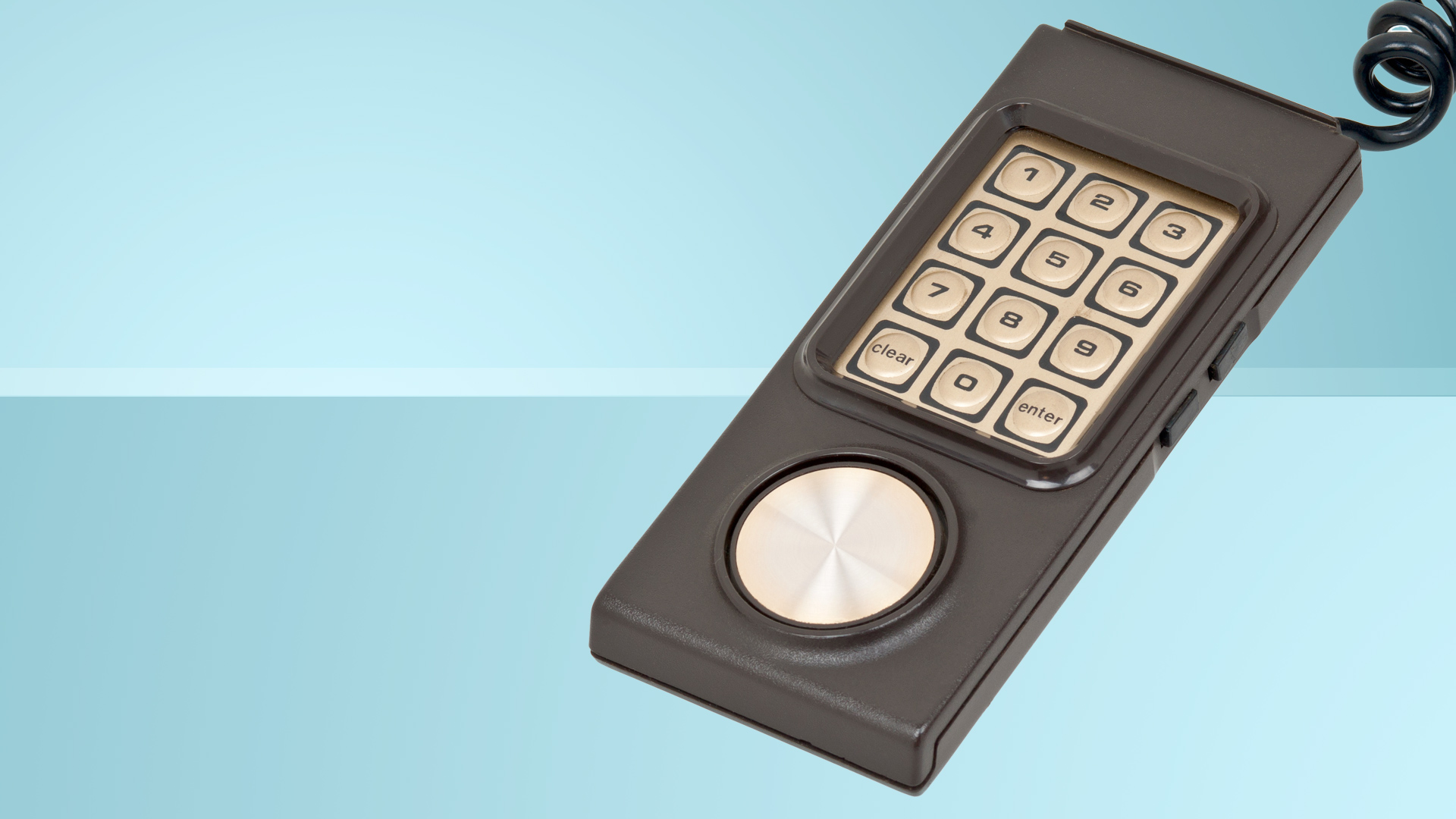
25. Intellivision controller (1979)
A controller doesn’t need to be good to be important. Just look at the Mattel Intellivision pad.
It’s a pretty nasty thing: looks like a telephone and uses a cheap-feeling membrane under its buttons. However, it was the first home console to use something approaching a D-pad.
The round disc at the bottom is a 16-way controller. Even the NES pad has ‘only’ eight directions. Still, we know which one we’d pick.
The Intellivision controller also features plastic inlays that go over the numerical buttons, a feature that would reappear with the super-not-successful Atari Jaguar.
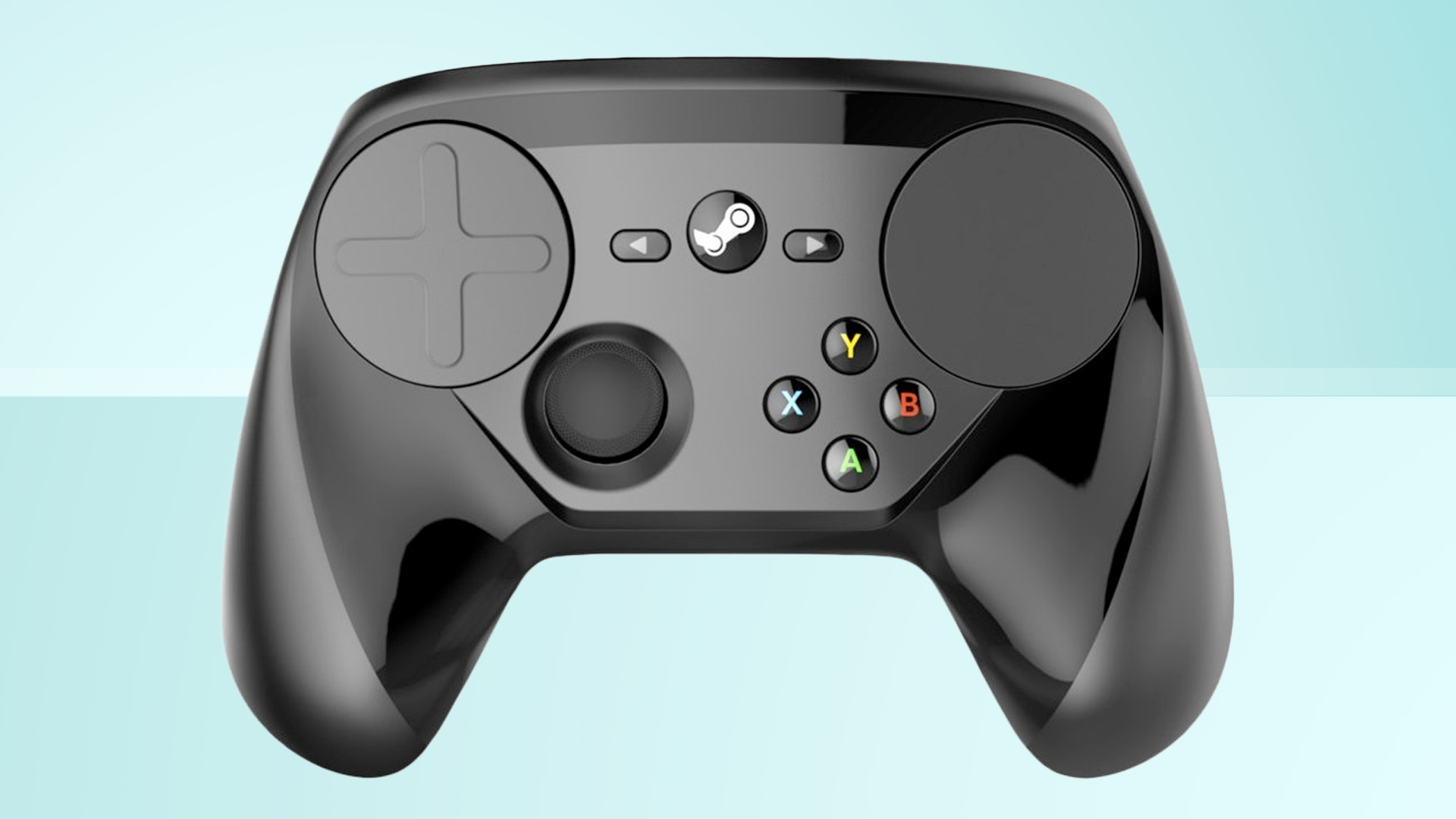
24. Valve Steam Controller (2015)
Is this a console controller at all? It depends how loose your definitions are. The Valve Steam Controller is part of an attempt to re-frame PCs, and SteamOS PCs in particular, as console replacers.
Just look at the Alienware Steam Machine and tell us that’s not meant to be a games console.
The Steam Controller is an ambitious demonstration of why it’s often still a bit of an awkward fit. Like trying to pull on a wool jumper you just washed at 60 degrees.
The two round pads on the front try to replace both analogue sticks of a normal controller and a mouse. And, well, it kinda works well some of the time. It’s a good controller pumped pull of caveat-shaped holes.
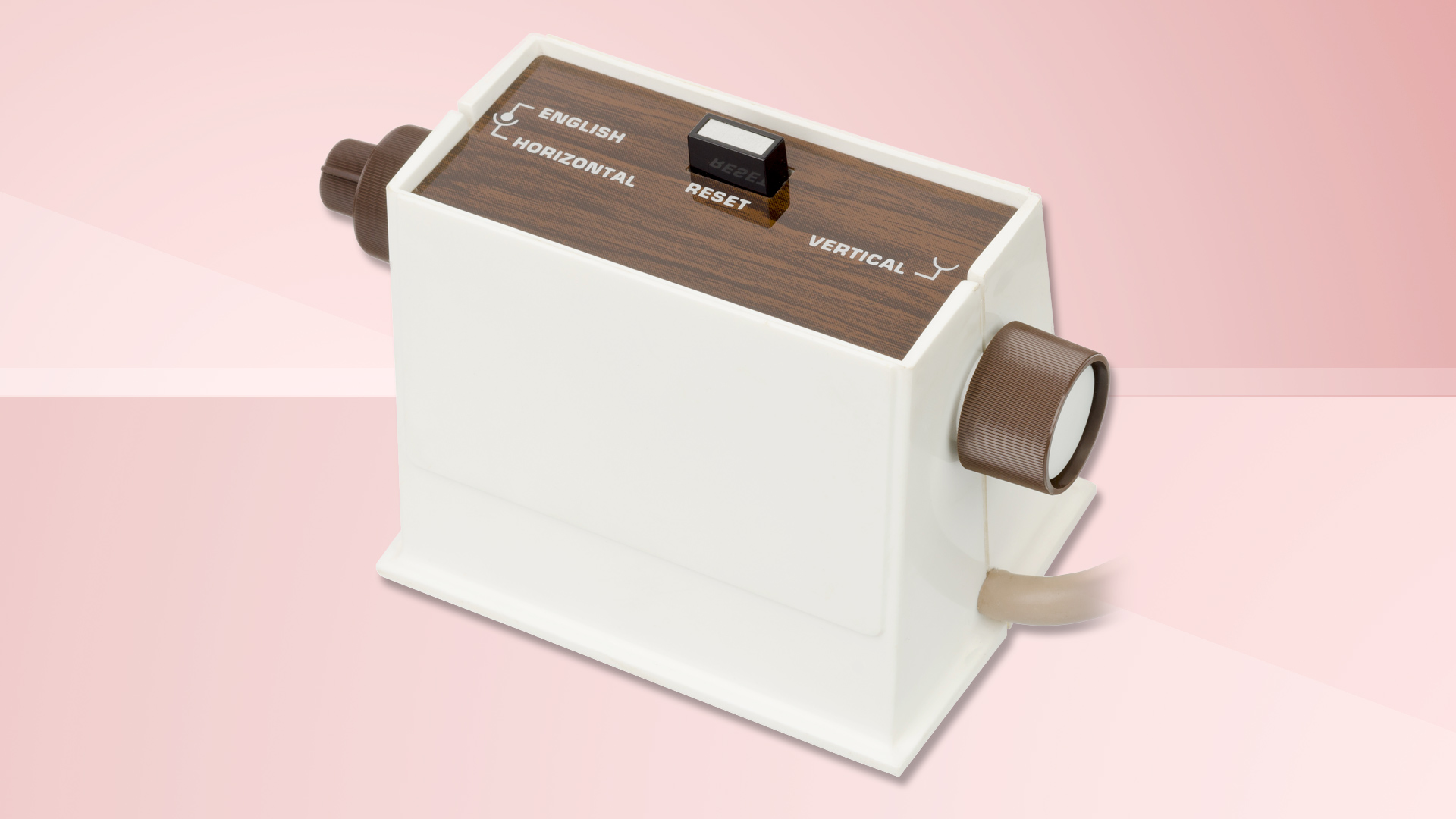
23. Magnavox Odyssey paddle (1972)
The first proper home game console has to have a place on its list, even if its controller looks a bit like a toy toaster if you look at it from anything more than arm’s length.
It’s based on Pong’s arcade controls, but where each player gets a single rotary dial with that cabinet, the Magnavox Odyssey controller has two per box. Vertical and horizontal movement: pretty advanced back in the early 70s. These kind of controls were called paddles.
The same rotary controls would be used in the half-dozen or so ‘dedicated’ Magnavox consoles (meaning all their games were built-in). But as soon as the Atari 2600 was released in 1978, they would look past-it.
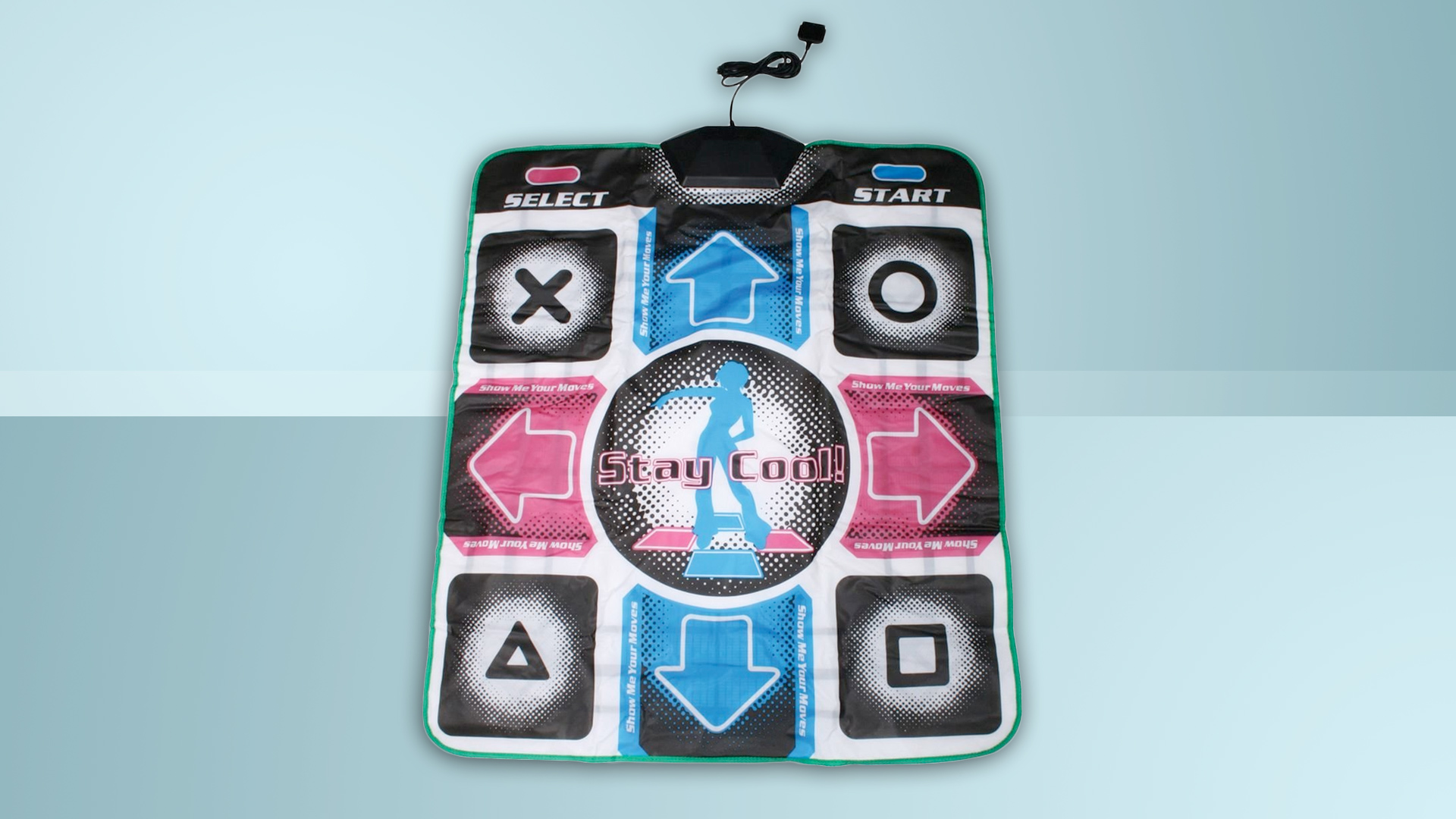
22. Konami Dance Pad (1999)
An odd and obsessive trend can become food for the mainstream in a slightly different context. In the arcade, dance games like Dance Dance Revolution became associated with addicts who burned tracks into their muscle memory. Sure, they can’t dance, but they sure can Dance Dance.
Add a Konami Dance Pad and put it in the living room and you have the fodder of kids’ sleepovers and adult silliness after a few WKDs. Like a PlayStation-powered alternative to Twister. (For non-UK readers, WKD was a popular alcopop back in the old days.)
Today’s gaming trends like VR can cost you more than a month’s salary just to get tooled-up, but in the early 90s a dance mat was the sort of thing you could buy someone for a Christmas present.
Dance Dance Revolution arrived on PS1 just a month after hitting the arcade. While the dance mat craze was already all-but-dead more than a decade ago, arcade tournaments for DDR nuts continue. Mostly in Japan: no prizes for guessing that one.
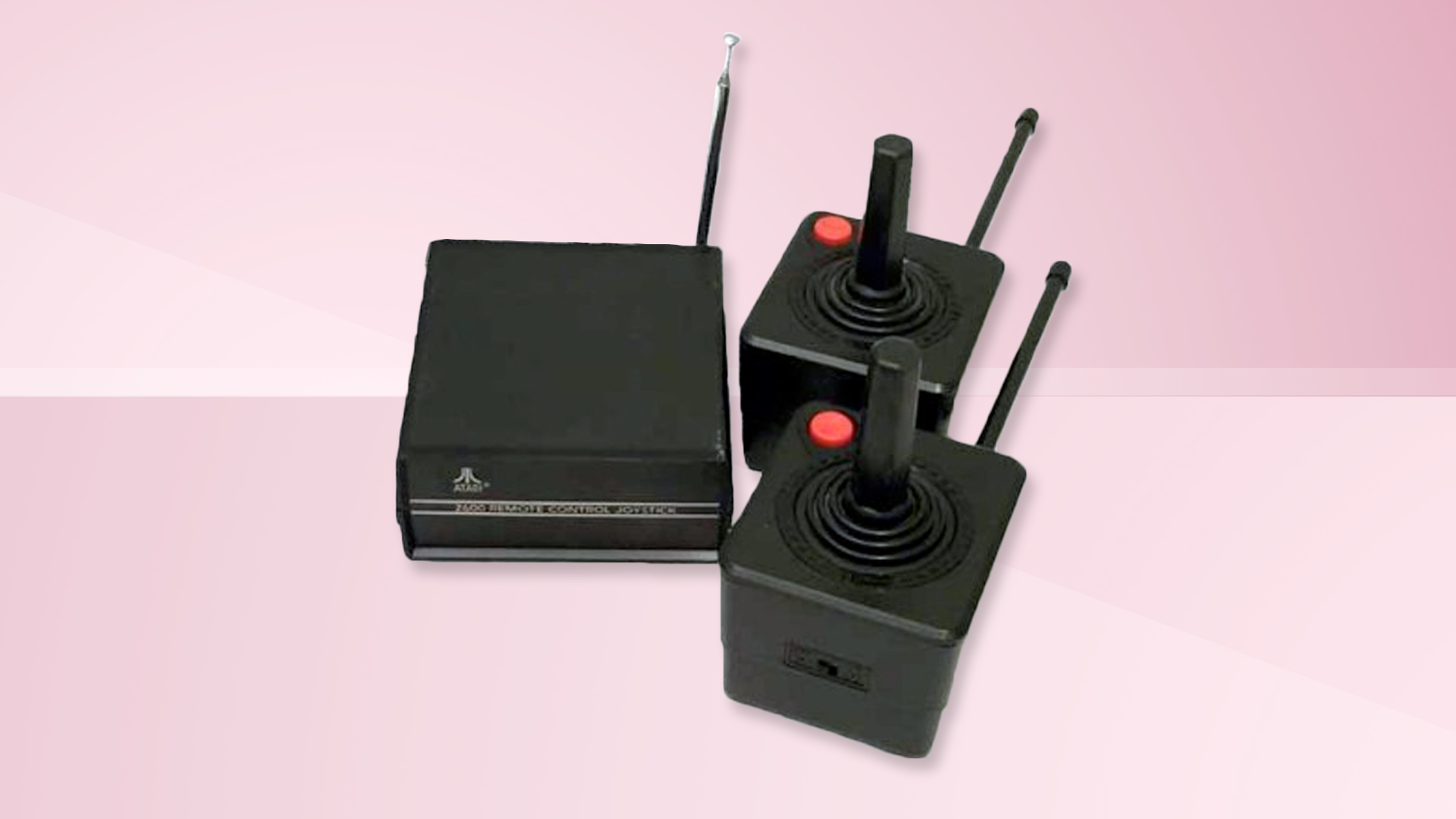
21. CX-42 for Atari 2600/2700 (1983)
Atari CX-42? You what? These were the first wireless home game controllers, released all the way back in the 80s.
They used RF transmission, had huge bases with giant antennas and needed a big control box on the other end. Add to that poor battery life and serious lag, and you have to wonder why anyone would buy one of these over the classic Atari 2600 sticks.
And then you remember quite a lot of people bought smartwatches when they did virtually nothing. Oh, and Amstrad e-mailers.
Under all the “ahead of its time” tech sits an Atari 2600 joystick too, so it’s not all bad.
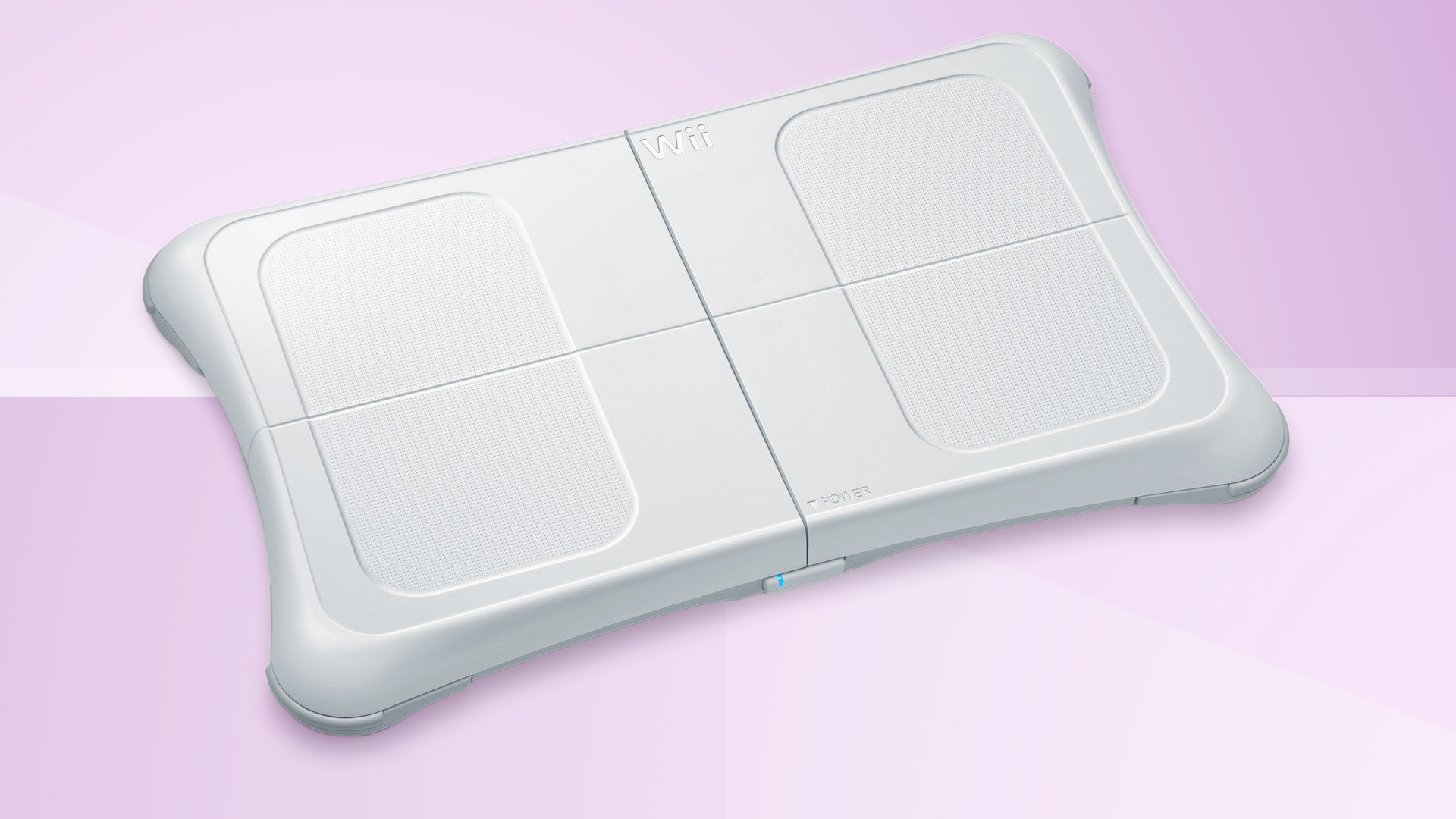
20. Wii Fit (2007/2008)
10 years ago, nothing did more to get non-gamers excited about a console than Wii Fit. Released in 2008 in the US and UK, it seemed to be out of stock for months, with a rush on orders we hadn’t seen since the Wii itself.
Like so many health crazes, it was a fad. But it also was proof games weren’t appealing more widely because what they were doing did not really appeal to non-gamers. Of course, all that has changed now mobile games have managed to tap directly into our dopamine receptors. Y’know, like heroin.
The Wii Fit board is a little like a smart weighing scale, able to tell your balance and position using sensors at each edge of the board. Its main uses are for yoga and step aerobics-like exercises.
Though it didn’t receive anything like the fanfare of the original, Nintendo also released a Wii Fit for Wii U in 2013. It works with a Fitbit-a-like pedometer, the Fit Meter, that tracks your movement day-long.
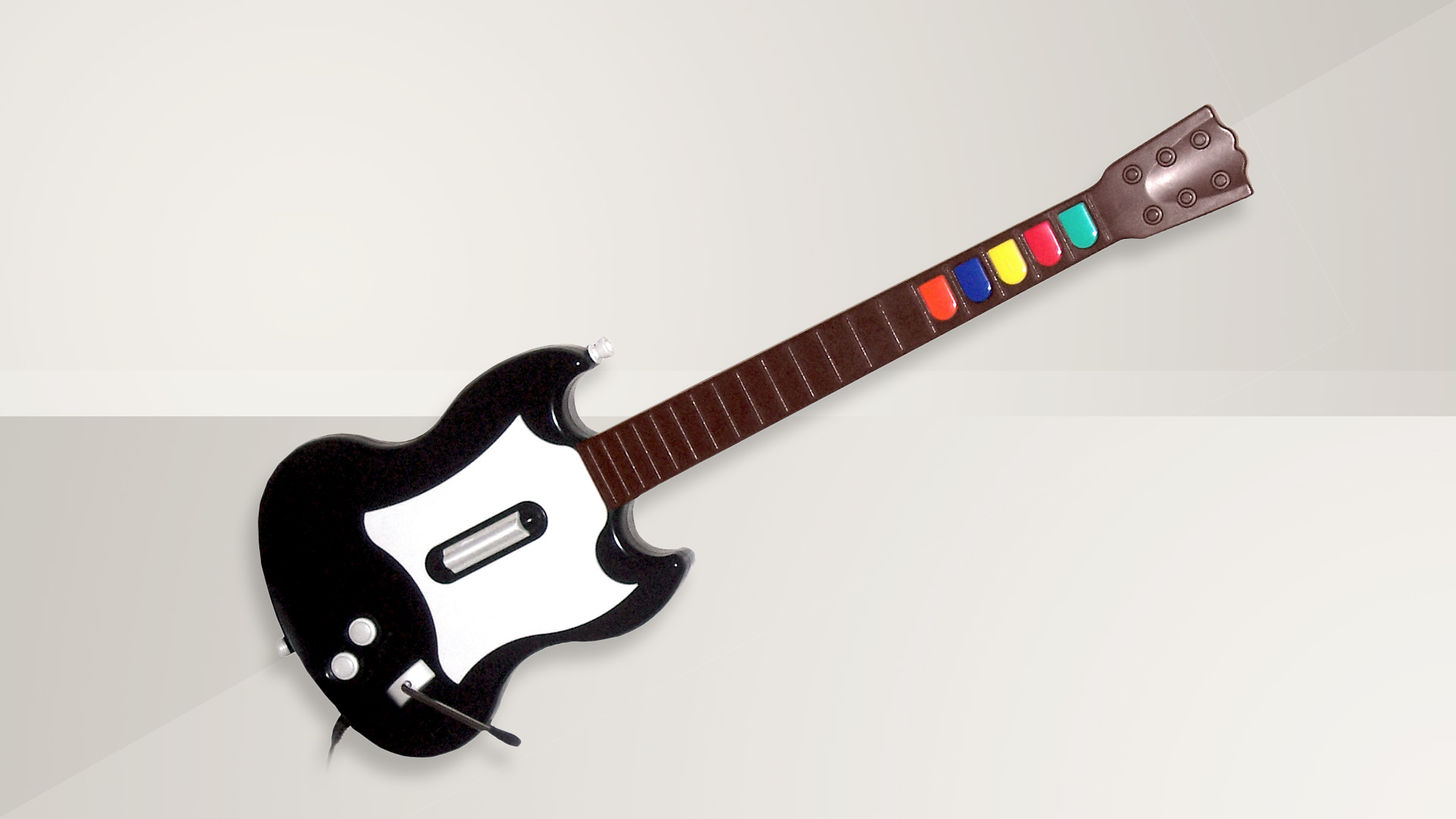
19. Guitar Hero guitar (2005)
The 2000s were years jam-packed with plastic tat. Most important of the lot was the original Guitar Hero controller, which led to the drum kits of Rock Band and decks of DJ Hero still gathering dust in many a cupboard out there.
If you missed the console band craze, the original Guitar Hero guitar was a gamepad of sorts modelled after a Gibson SG, with buttons on the neck and a paddle where you’d traditionally strum a guitar’s strings.
The most important inspiration for this peripheral was not actually the SG, though, but Konami’s Guitar Freaks. It was an arcade game based on similar fake guitar antics, the first version of which was produced in 1998.
Konami made similar guitar controllers long before RedOctane, who produced Guitar Hero’s controllers for Activision, but faced legal nightmares when it tried to exploit the trend on console in the US. Guitar Hero won, in other words, at least until the popularity of plastic instruments games dried up in the late 2000s.

18. Neo Geo Arcade Stick (1990)
If you were a console gamer in the 90s, you may remember looking with horrified awe at how much games for the Neo Geo cost. You could pay up to $300 for a Neo Geo AES cartridge, or $550 accounting for inflation.
Nothing reproduced the feel of the arcade like a Neo Geo, though. It was much more powerful than the SNES or Genesis/MegaDrive, able to play the original arcade versions of games like Samurai Shodown II and Metal Slug rather than cut-down ports.
It needed a controller to match, the Neo Geo Stick. This is a replica of the 90s arcade experience almost as convincing as the pixel perfect, if horrendously expensive, Neo Geo games themselves.
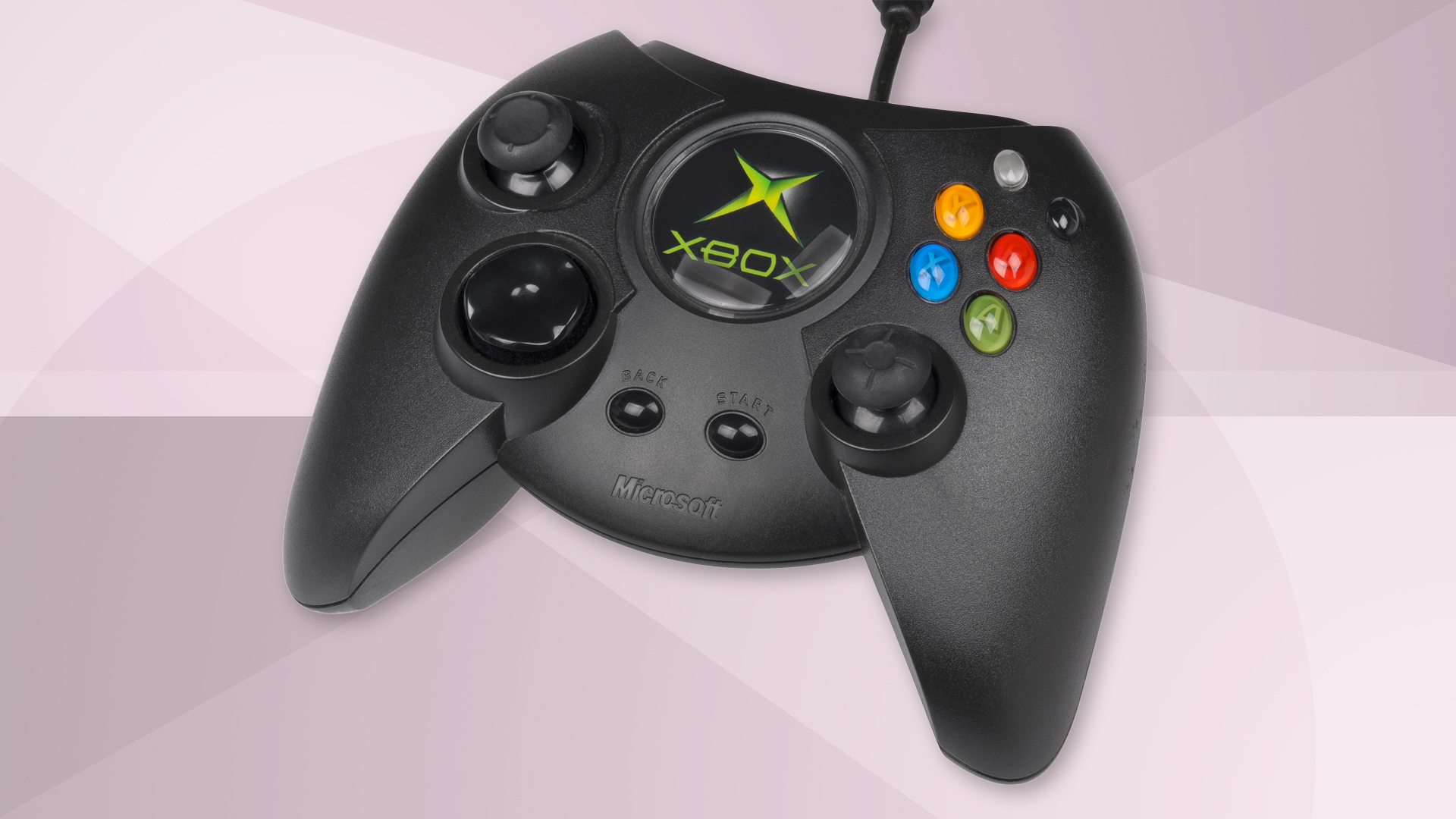
17. Xbox “fat”/ Controller S (2001/2002)
We can hazily remember how strange it seemed when Microsoft became a console-maker in 2001/2002. Sure, it had made Microsoft Flight Simulator, but could it really pull off what Sony had done a half-decade earlier?
At least Sony was cool. Microsoft, much like today for the most part, was the brand equivalent of a leather briefcase.
The first Microsoft controller had to be a statement of intent, and we ended up with a gigantic scarab beetle of a thing with a huge Xbox logo bunged on the front. We don’t miss it much, but it was important.
Oddly enough, Microsoft had already made a much better controller. In Japan, the Xbox launched with the Controller S, which replaced the fat pad as the worldwide standard shortly after launch. Apparently we in the west all have huge hands, hence the massive pad.
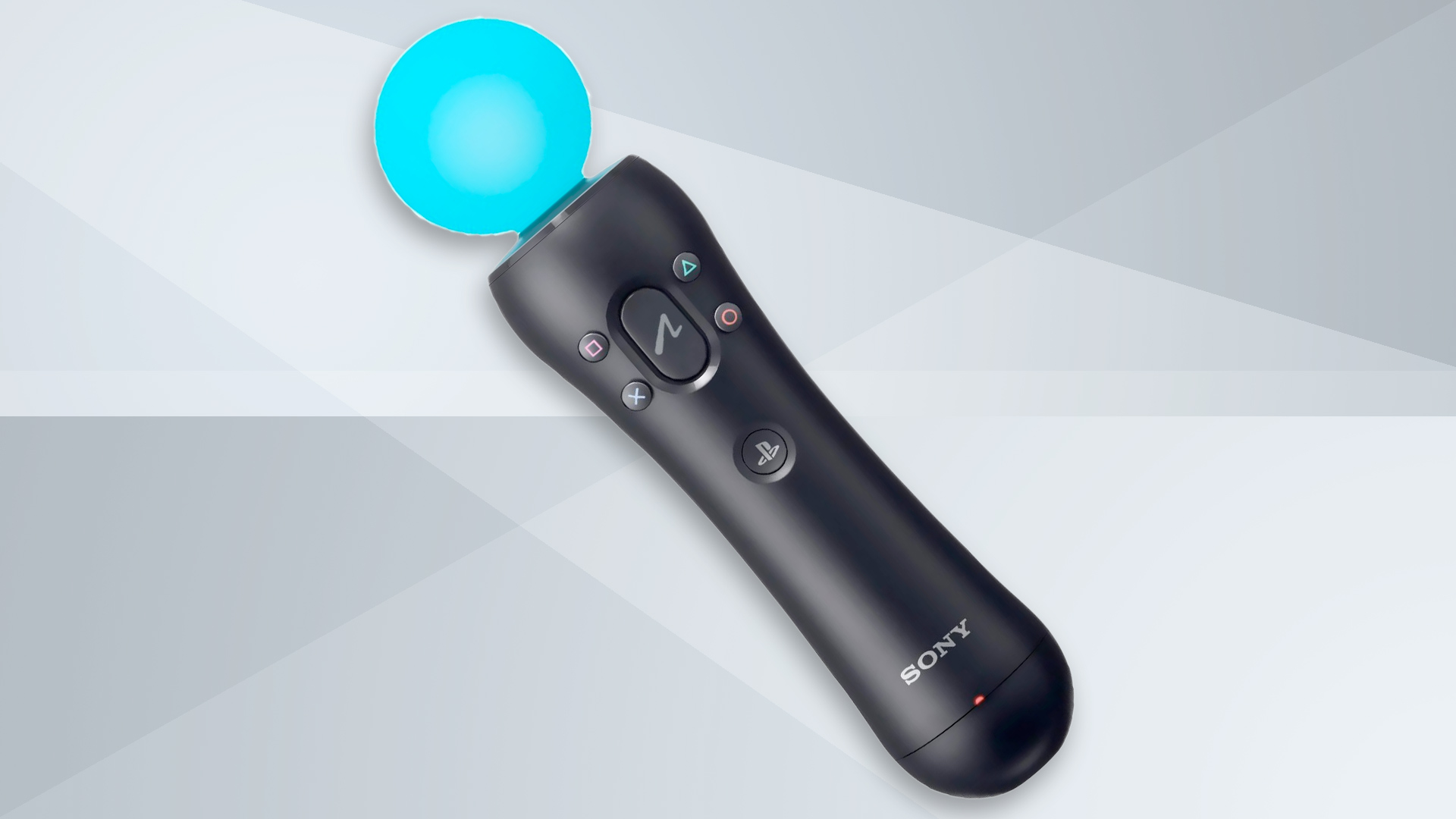
16. PlayStation Move (2010)
What a second life the PlayStation Move is having. It first launched as a motion controller for PS3, and trundled into the PS4 era with much the same limited excitement level. We’d already grown accustomed to motion games, the Wii having been out for years by the time the Move appeared. Many of us were already over it.
However, that’s all changed now the PlayStation VR is out. The Move wands are the motion controllers for the PS4’s virtual reality headset, flipping them from casual gamer tools to ones some of the most enthusiastic players want.
For those yet to try one, they’re stick-shaped controllers with accelerometer/gyro motion sensors inside and an LED-lit bubble on the top. This can be tracked in three dimensions using a camera connected to your PS4.
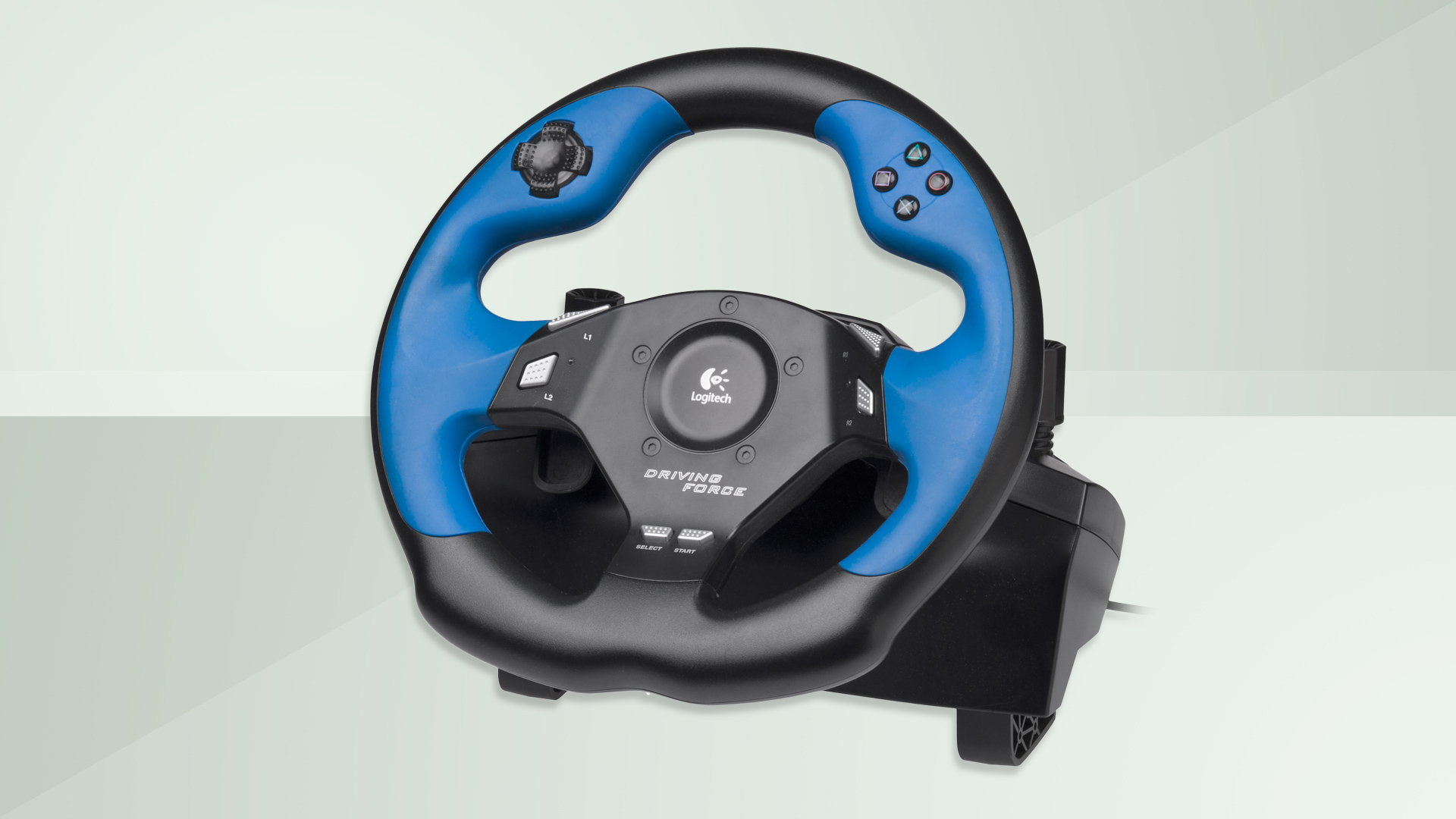
15. Logitech GT Force wheel (2000)
Proof that semi-popular trends tend to outlast those with frothing-at-the-mouth fans, console steering wheels have maintained a slow-boil appeal ever since the first ‘proper’ console racing wheel appeared in 2000.
The Logitech GT Force wheel for PS2 was the first force feedback wheel for consoles, using motors in the wheel’s base to pull against your turns. A wheel like this is still the best way to get a realistic driving experience in a game.
Of course, if this wasn’t a console list, the plaudits would have to go to Microsoft and its Sidewinder Force Feedback wheel, released even further back in 1997.
Logitech made the GT Force wheel in partnership with Polyphony Digital for Gran Turismo 3: A-Spec.
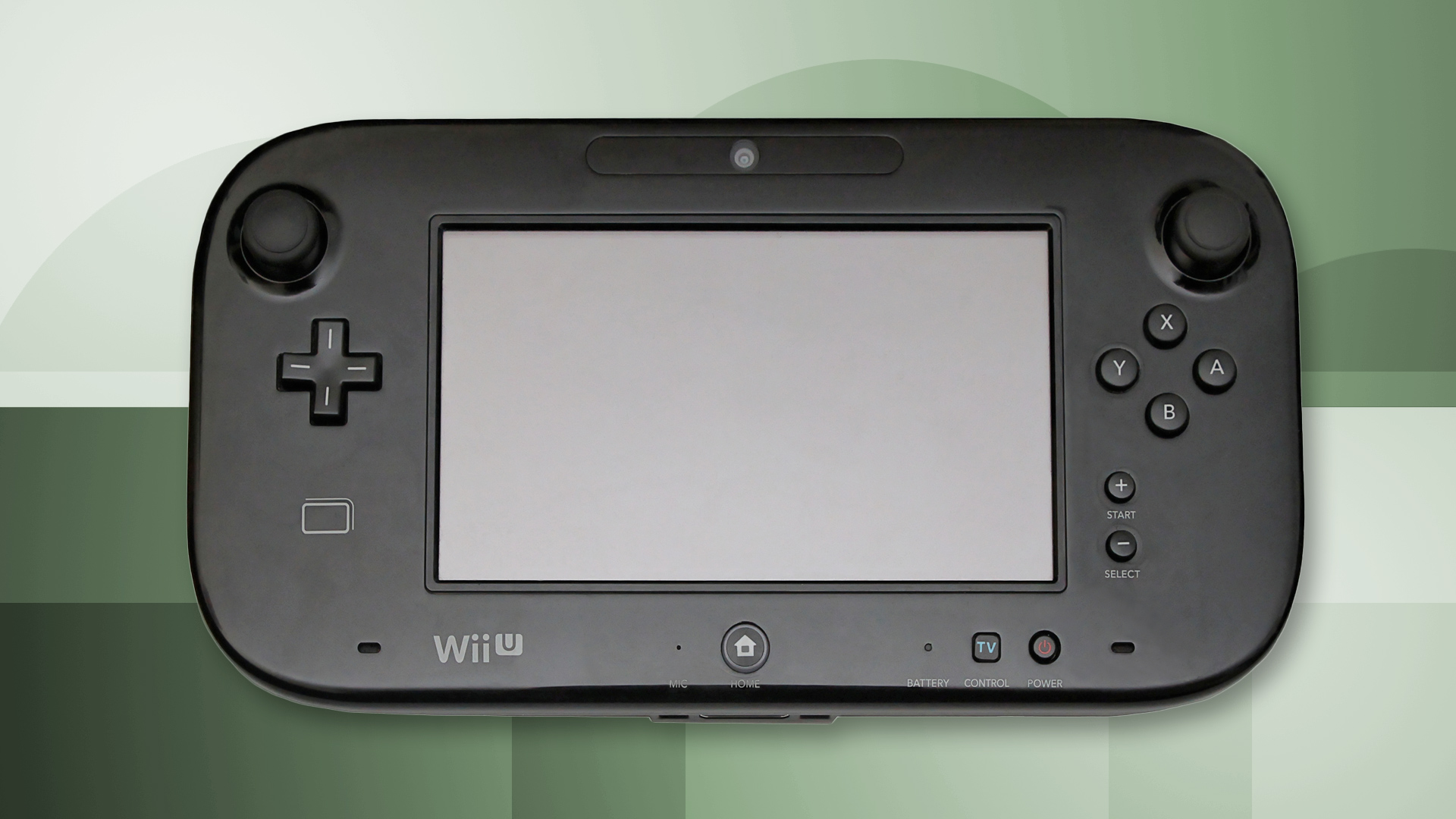
14. Wii U GamePad (2012)
One of the few consoles that’s a handheld, a home console and a gamepad of sorts in one, the Wii U is an odd duck. The tablet part can’t play games on its own, so it’s not exactly a giant DS, but you can choose to play games either on your TV or on the pad’s screen. As long as the console’s main box is switched on.
It’s a typically Nintendo-odd way to approach a modern console, one saved by a bunch of great first-party games, even if third-party support is dreadful. Its place here is assured by the novel idea, not the hardware, mind.
With a truly dreadful screen resolution of 854 x 480 pixels and an old-fashioned resistive touchscreen, our reviewers would laugh the Wii U GamePad off the shelf if it was sold as a tablet.
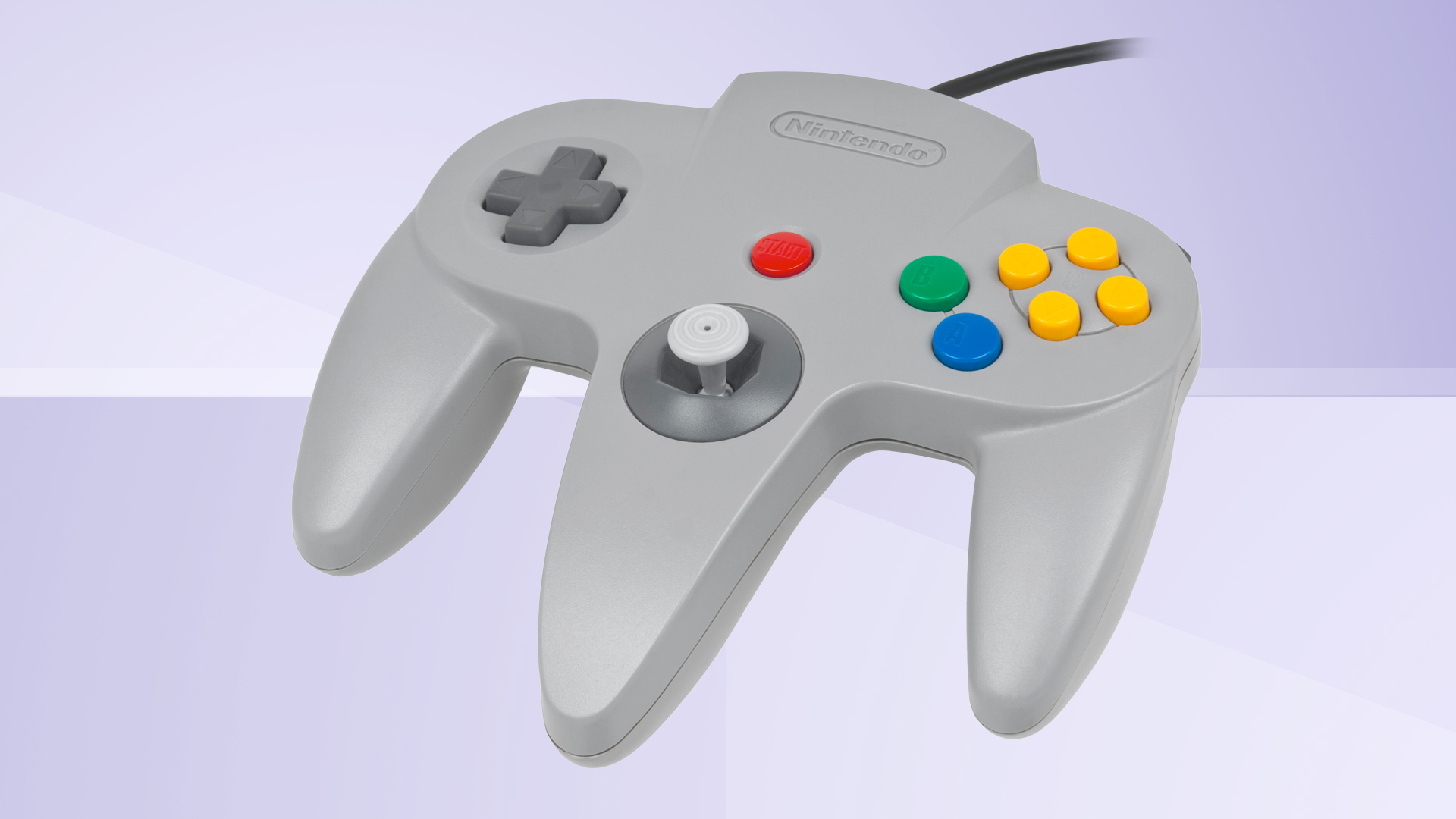
13. Nintendo 64 gamepad (1996)
We love the Nintendo 64 dearly, but it didn’t half arrive at an awkward time. The 3D graphics were changing how games were made, and the N64 pad wasn’t really ready for it.
Compared to the PS1’s DualShock controller, the N64’s dismal for first-person shooters and other games where you have to actively control the camera’s viewpoint. Many of you will remember fighting with those little yellow buttons to try to get the camera to play ball, not to mention the unusual feel of that analogue stick.
It’s the top example of a great-but-not-that-great console controller.
However, it was the first to have vibration feedback, the Rumble PAK released in mid-1997, almost half a year before the PS1’s revolutionary DualShock pad.
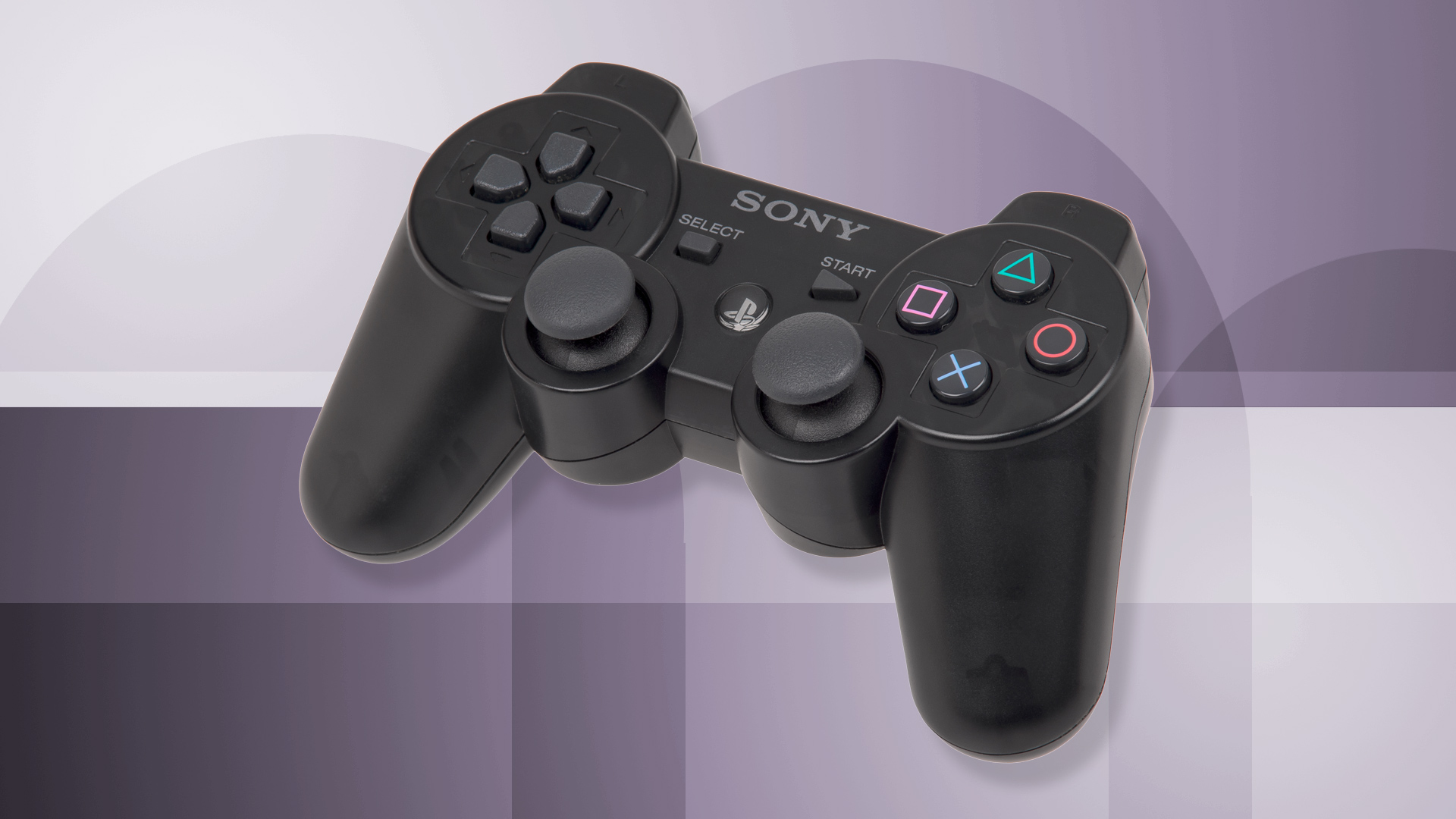
12. Sixaxis for PS3 (2006)
The Sixaxis gamepad for PS3 is not remembered as one of Sony’s finest moments. It lost the rumble of the previous DualShock 2, feels almost eerily light and, in our experience at least, is less reliable than most first-party controllers.
However, it did introduce some very important features at risk of getting lost in all the complaining. It was the first wireless PlayStation controller by Sony. If you wanted wireless for your PS2, you had to buy a third-party pad.
More interesting, it has built-in motion controls that give it the Sixaxis name. To this day the Xbox pads lack this. While used sparingly after a few early ‘showcase’ titles, this gyroscope and MEMS accelerometer combo made games like Flower possible.
Sony added rumble back in with the DualShock 3, released alongside the 80GB PS3. While a great pad, that it is effectively a Sixaxis and DualShock 2 squished together means it doesn’t quite earn a place in this list.
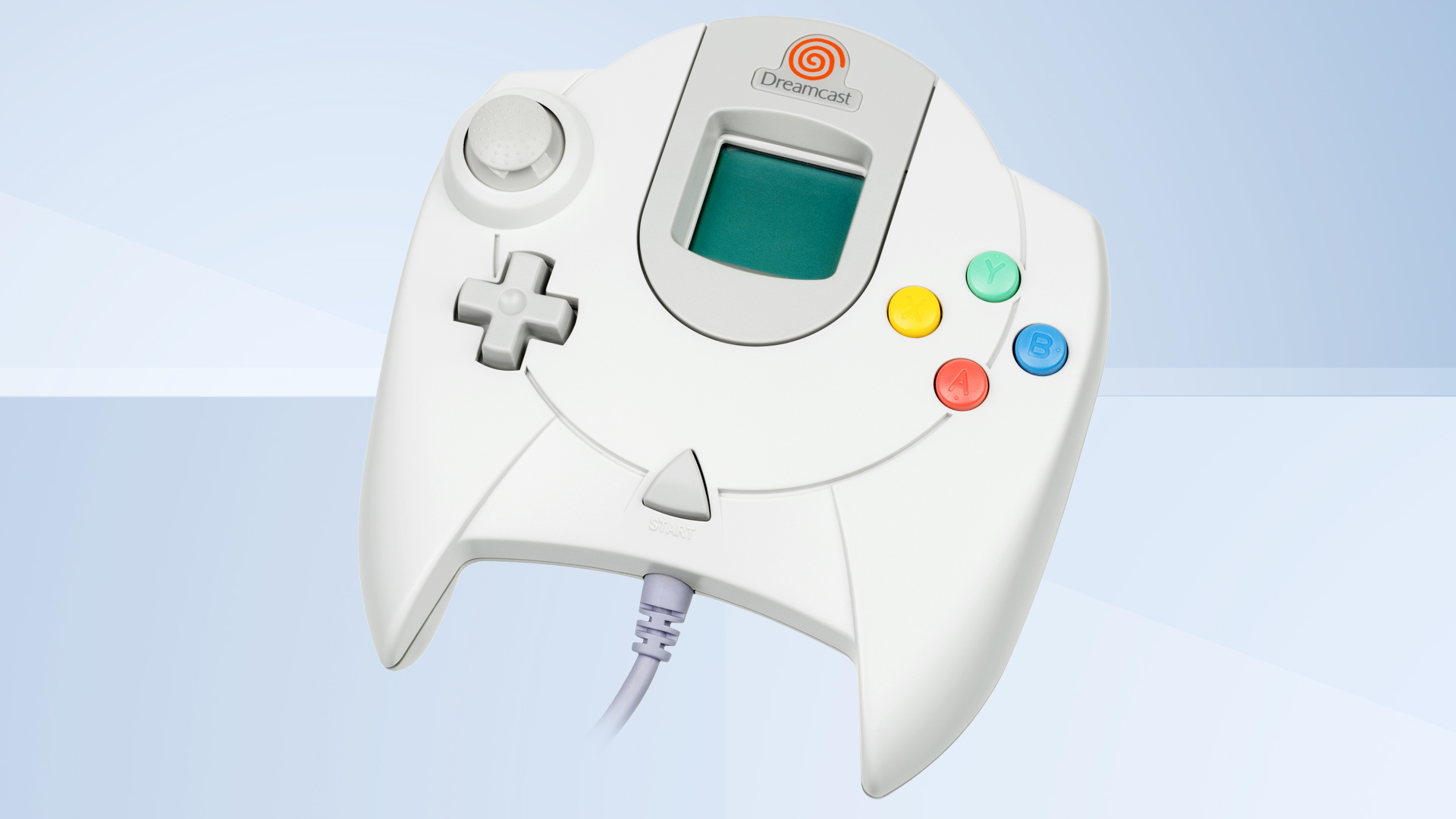
11. SEGA Dreamcast pad (1998/1999)
The Sega Dreamcast was a console of an almost equal number of failures and revolutionary elements. It gave us low-latency online multiplayer before Xbox Live or PSN, but the console itself lasted less than 18 months in the EU and US before being canned.
SEGA’s Dreamcast controller was not an amazing feat of ergonomic brilliance, but it did offer real innovation with its VMU (visual memory unit). This is the memory card that slots into the back of the pad, and has its own D-pad and buttons. It’s like a tiny little console in its own right.
But what could you do with it? It would act as a second screen with some games, showing your health in Resident Evil 2 and your ammo level in GTA 2. There were even some mini-games you could play when it wasn’t plugged in, like Sonic Adventure 2’s Chaos Adventure. We’ll admit, we had the game, never played the mini-game.
The Dreamcast was discontinued before the VMU found its killer app, but still deserves an A for effort.
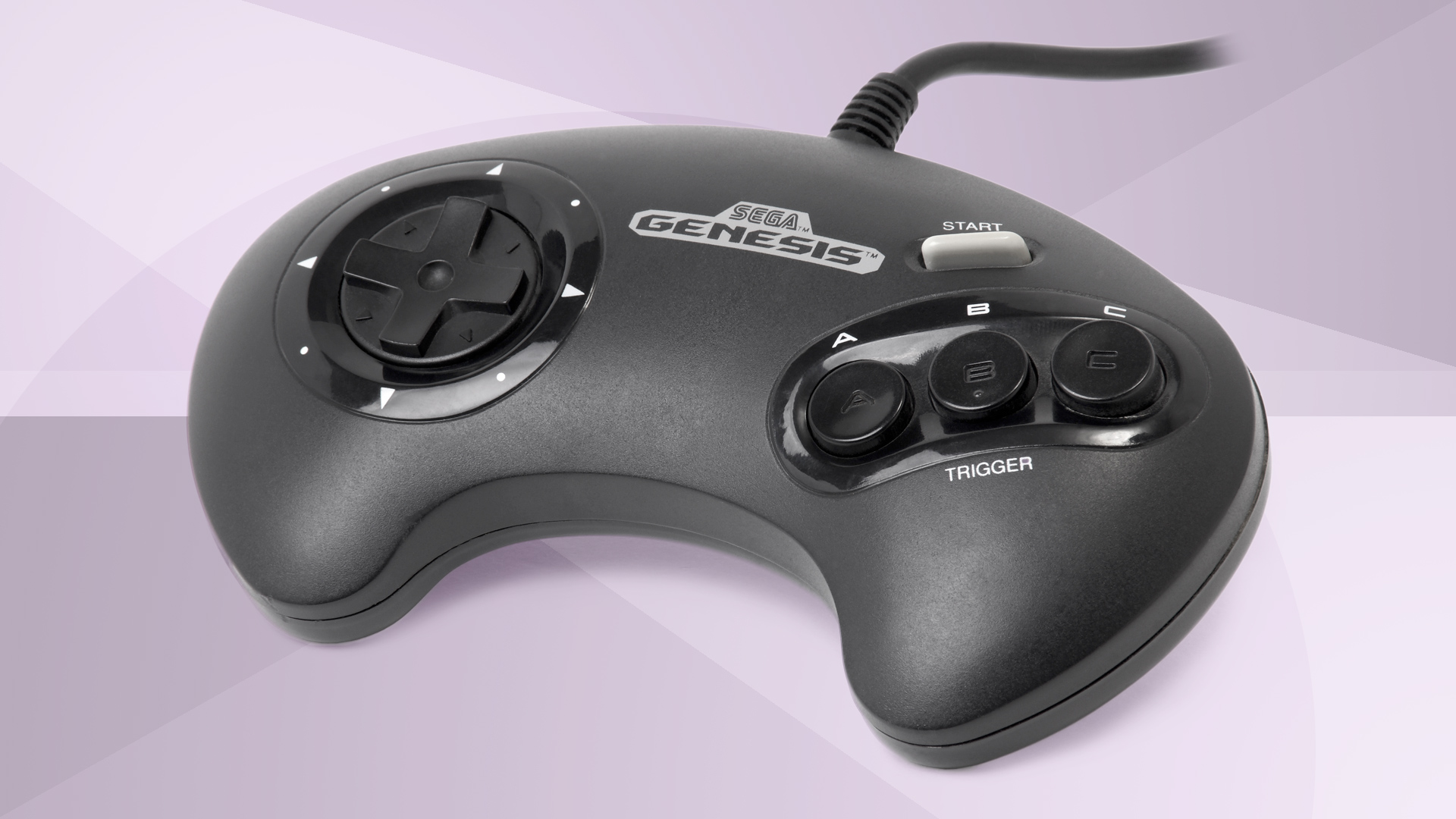
10. SEGA Genesis/Mega Drive 3-button (1989)
We can remember friends arguing back in the 90s whether the Sega Mega Drive pad was better than the SNES one. From its position here, you can tell what we think. However, it’s still the first proper gamepad millions used, and is a corker regardless.
The original Mega Drive pad has just three buttons and a d-pad. It's big and curvy, reassuring in its chunkiness.
Later on SEGA made a slightly smaller 6-button pad, the favorite for many, but as its bonus buttons were only used in a (sizeable) fistful of games, we consider the golden oldie the default Mega Drive pad.
The perfected version of this design was the Sega Saturn pad, a six button’er with shoulder buttons. However, that it feels close to the Mega Drive Genesis era tells you one of the reasons the Saturn failed.
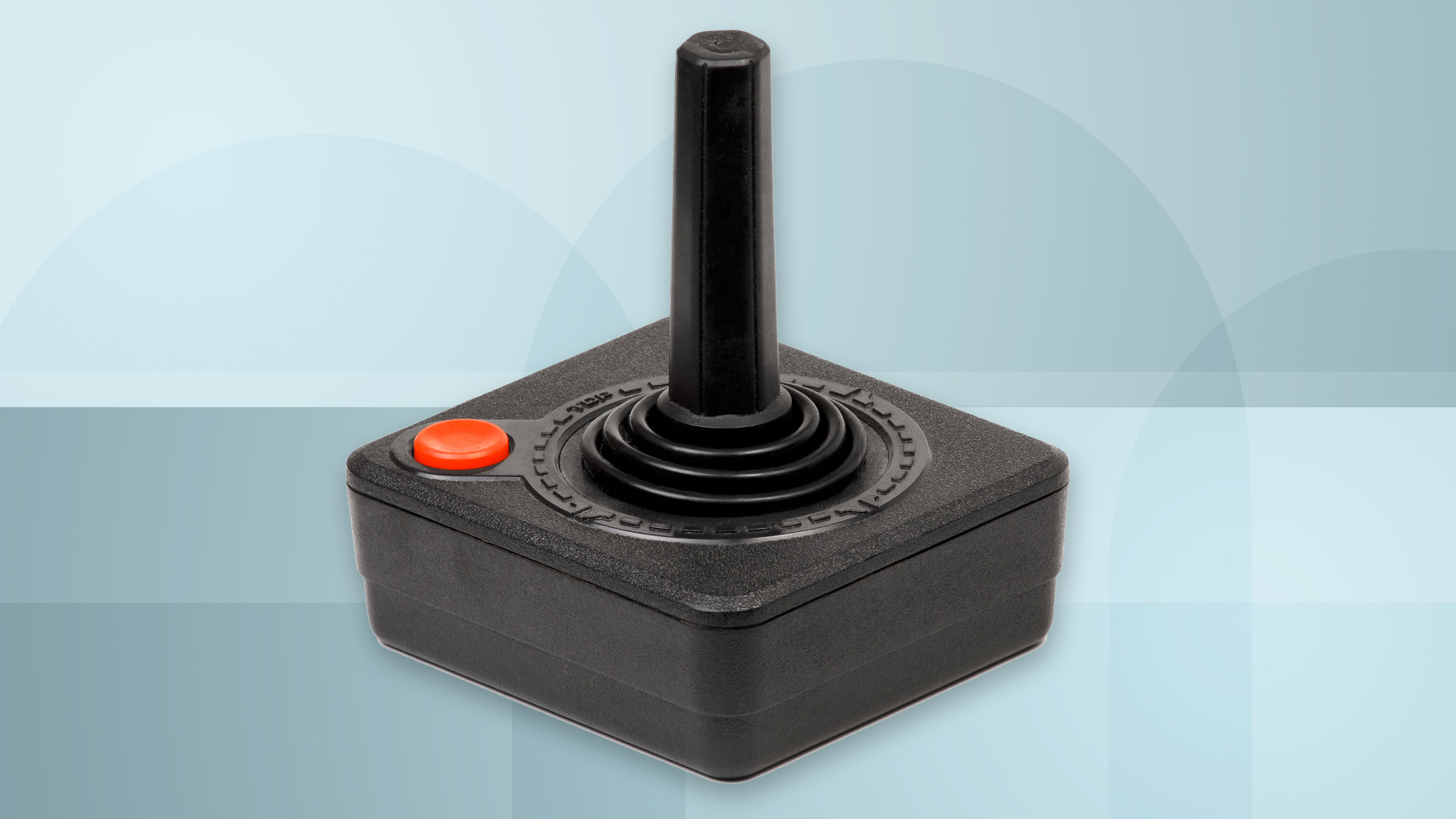
9. Atari 2600 joystick (1977)
The most easily recognizable joystick of all time, the Atari 2600’s controller deserves a spot in a design museum. It probably is sitting in at least one right now.
It’s about as basic as they come: a black plastic box with one red button and a rubbery joystick sitting around some rubbery buffer rings. Pick one up and wait for the waves of nostalgia.
Unlike a NES pad, though, this isn’t a controller that feels totally at home in 2017. The joystick is quite stiff. Ideally you need to hold the base rather than putting it on a table as it has plenty of resistance, but not much weight. After a few hours you may be relieved to switch back to your trusty DualShock 4 or Xbox One pad.
If only an Atari 2600 is going to do, though, you might also want to check out the Wico and Tac 2 sticks. They go down well with the retro enthusiast crowd.
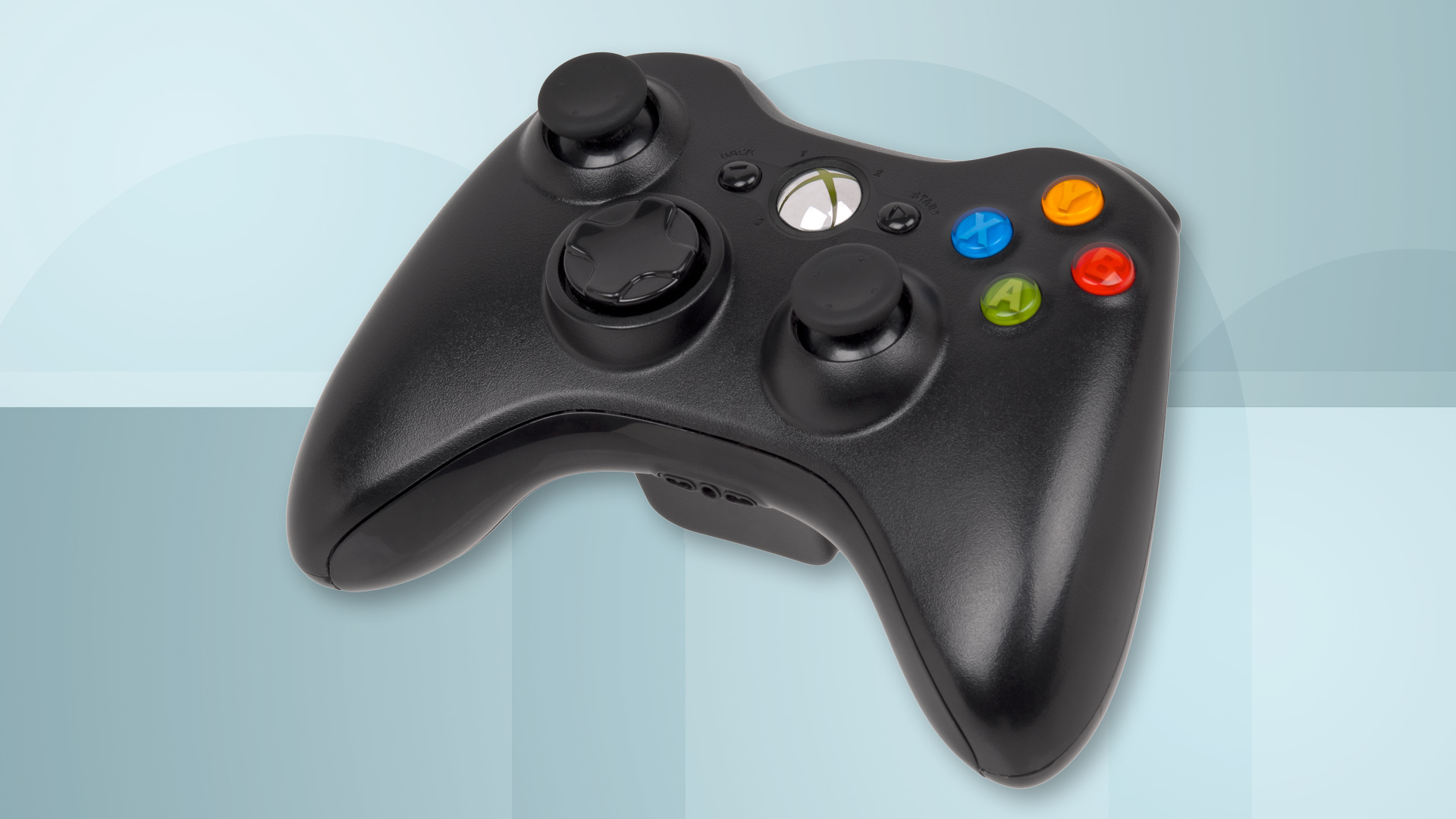
8. Xbox 360 pad (2005)
The Xbox One pad is better than the Xbox 360 one. There, we said it. However, Microsoft did land on something comfortably close to perfection with the controller for Xbox 360.
It was gimmick-free, felt much more substantial than the PS3’s SixAxis pad and had a cuddly curviness Microsoft cut down in the newer model. It’s no wonder you can still buy the old model in its “for Windows” incarnation.
One neat feature for the time was a 2.5mm connector to let you plug-in a headset without making its wireless capabilities completely pointless.
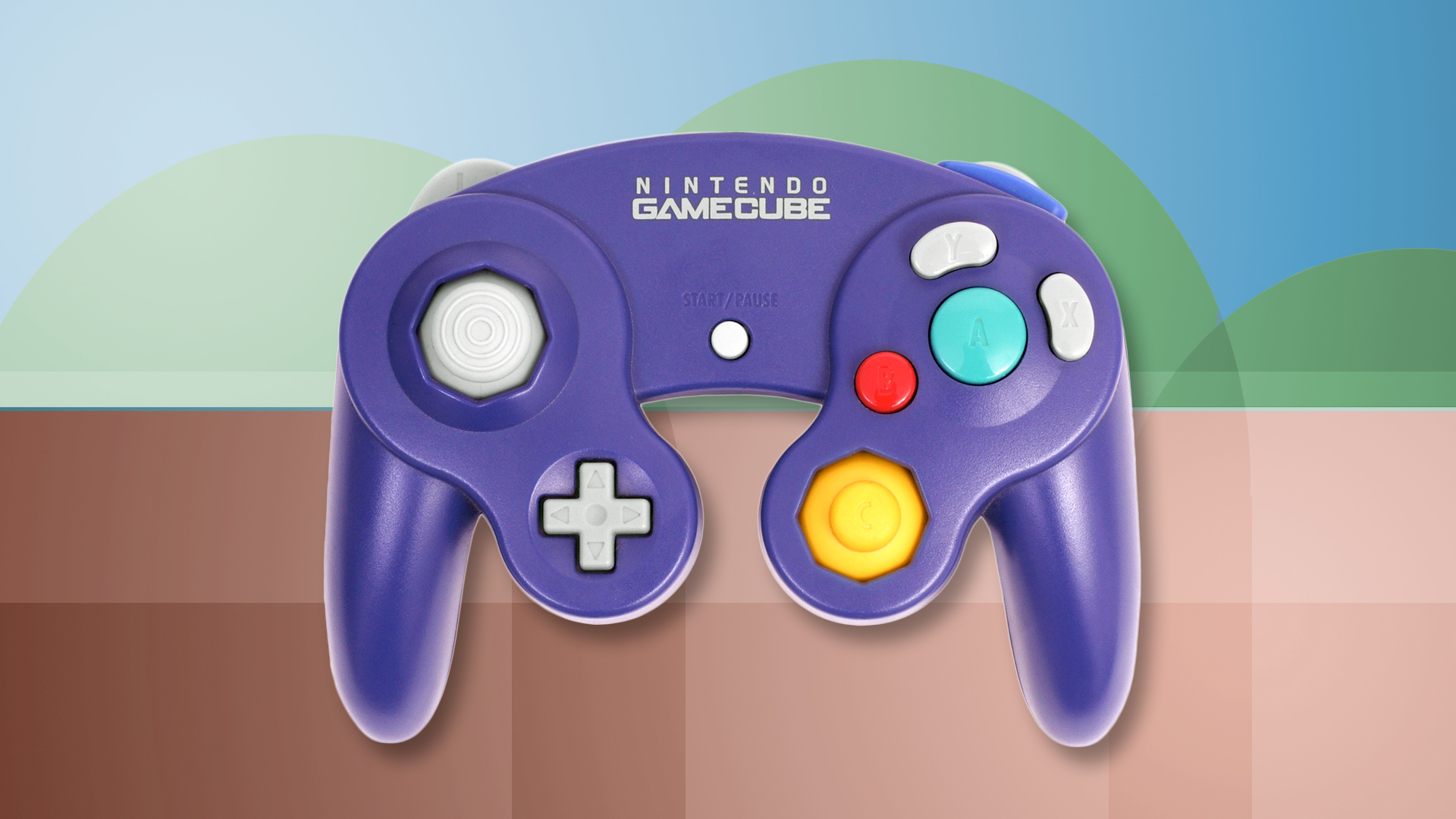
7. GameCube pad/Wavebird (2002)
Nintendo’s Gamecube controller took tips from dual-stick controllers like the Sony DualShock, but as you’d hope it’s not just a tweaked version what you might see from Sony or Microsoft. It’s Nintendo. Of course the Gamecube pad was going to be a bit odd.
It’s smaller, and has irregular-shaped buttons on the right side, almost an admission of “yep, some of our games are only going to need a button or two”.
The most important version of the Gamecube pad, tech-wise, is not the standard one, though. In 2002 the Waveband edition of the pad became the first modern, first-party wireless console controller. It ruins the look of the gamepad, adding a great big beer belly to its middle, but introduces very little lag.
The Wavebird uses RF wireless rather than infra-red or the now more popular Bluetooth, and comes with a wireless adapter that plugs into the front of the Gamecube.
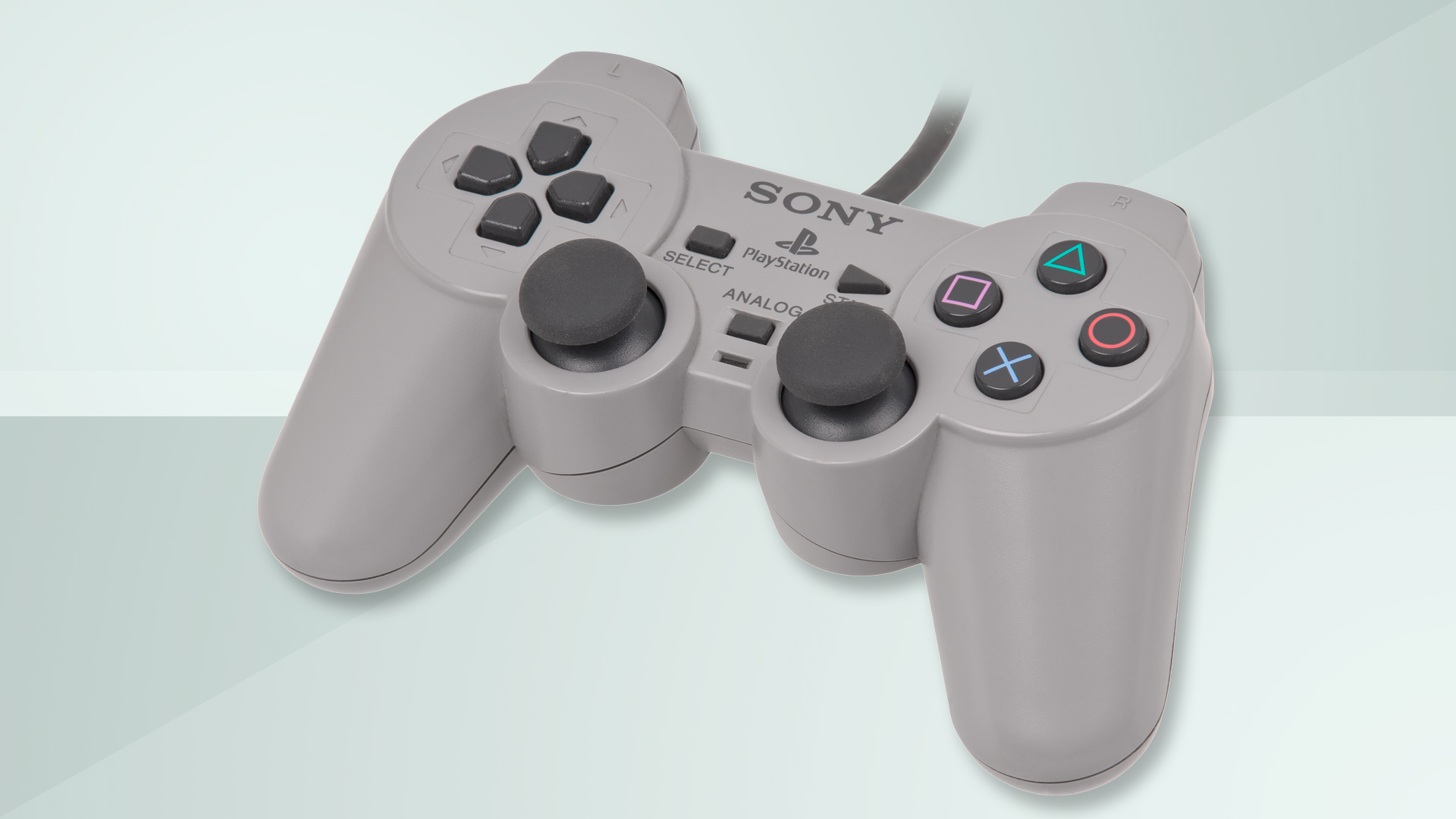
6. Sony DualShock (1997/1998)
The DualShock was not the original gamepad for the PS1. Sony’s first console launched with a pad that was effectively a funkier-looking, more ergonomic take on the SNES pad, with no analogue sticks at all.
However, as the complexity of 3D games increased, it became clear this pad wouldn’t cut it. And we ended up with the DualShock in 1997, the blueprint for all console controllers to this day.
It has dual vibration motors and, crucially, dual analogue sticks. This pad, as much as the power of the console itself, was responsible for steering the development of 3D console games.
Ape Escape (1999) was the only game to explicitly require a DualShock pad, though.
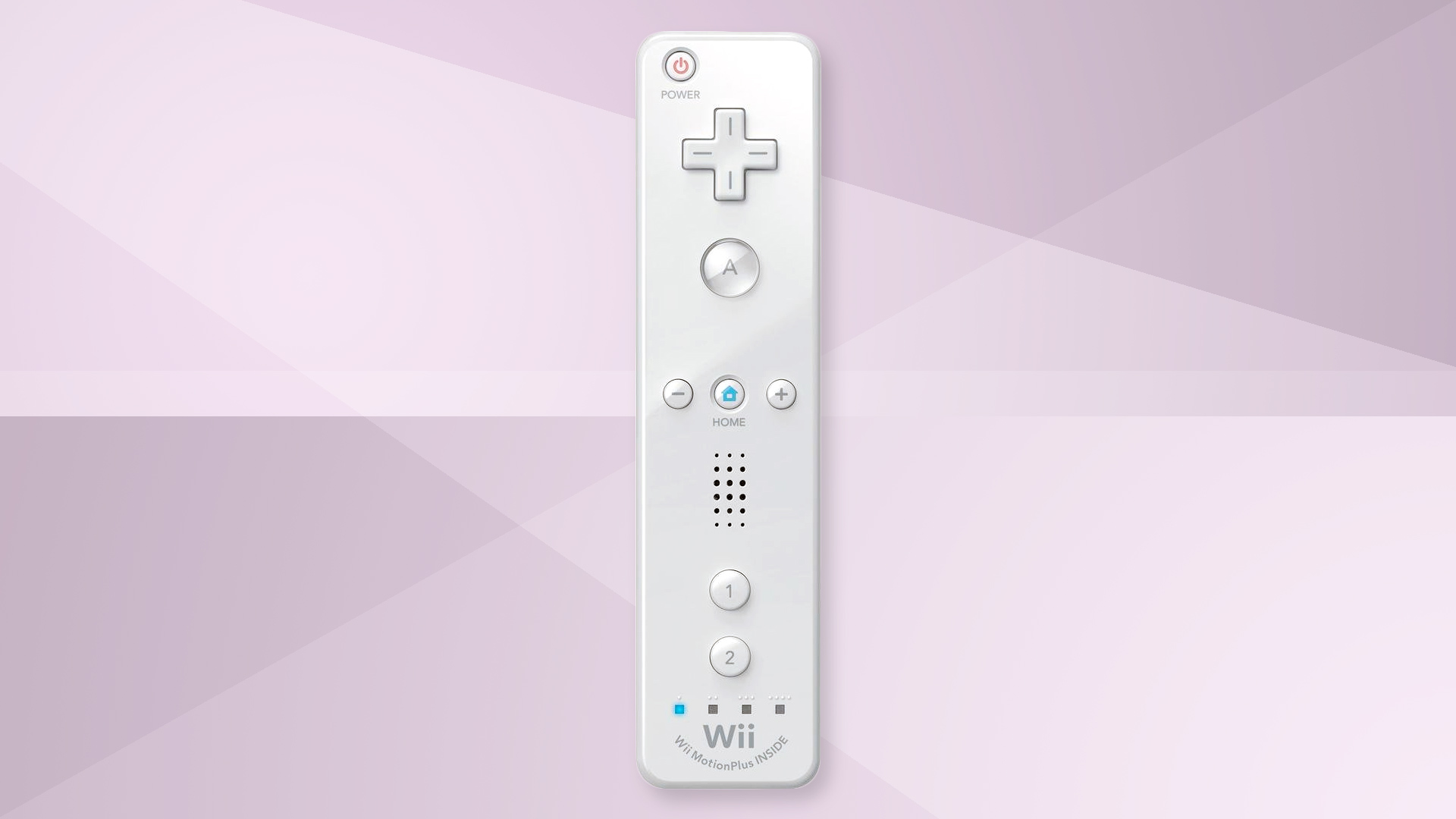
5. WiiMote (2006)
The original king of motion controllers, Nintendo’s WiiMote is the most iconic gamepad that isn’t really a gamepad. And when it is, it’s not a very good one. That’s not a riddle: you can turn the WiiMote on its side and use it as a gamepad with certain games.
It’s perhaps the most fun game controller released, if the one that has smashed more TVs than any other. Far too many people didn’t take Nintendo’s advice to always wear the WiiMote strap while playing. Bad move.
The first version of the WiiMote has fairly basic tracking hardware, using a 3-axis accelerometer. All smartphones have more than this, but the WiiMote Plus added a gyroscope for much more accurate tracking.
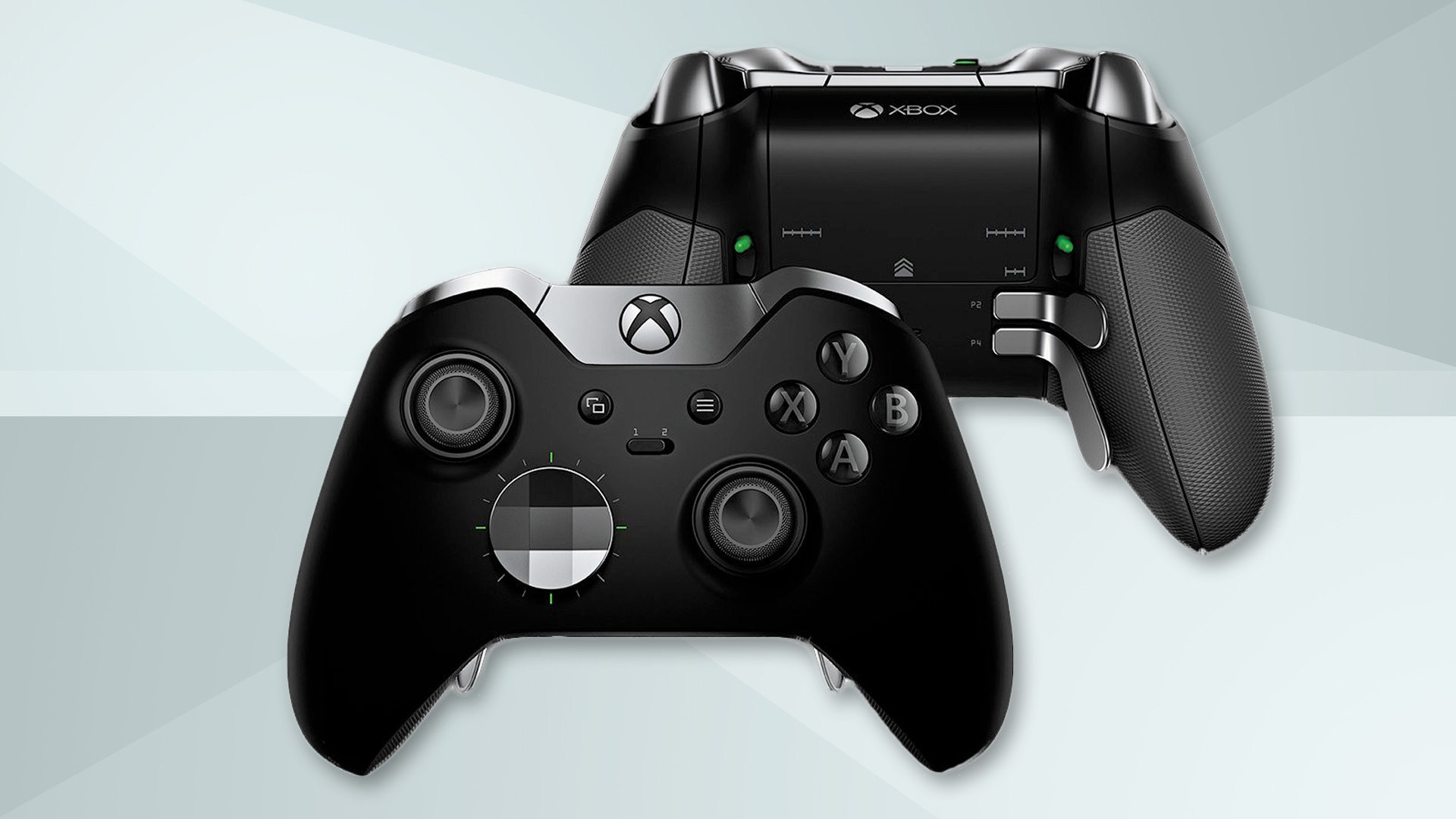
4. Xbox One Elite pad (2015)
Over the last decade a lot of work has gone into convincing the wider public that not all gamers are 14 year-olds with faulty social skills. The Xbox One Elite is Microsoft’s attempt to make an extra-serious gamepad. Although the jury’s out on whether that extends to ‘grown-up’ too.
It has removable sticks and pads, letting you change them to your tastes and needs, and hair triggers on the back to let you tap at lightning speed.
It’s a lovely piece of kit if you can get past the price, which gets close to that of an old-style Xbox One console, but if you’re an obsessive or competitive gamer, maybe it’s worth it anyway.
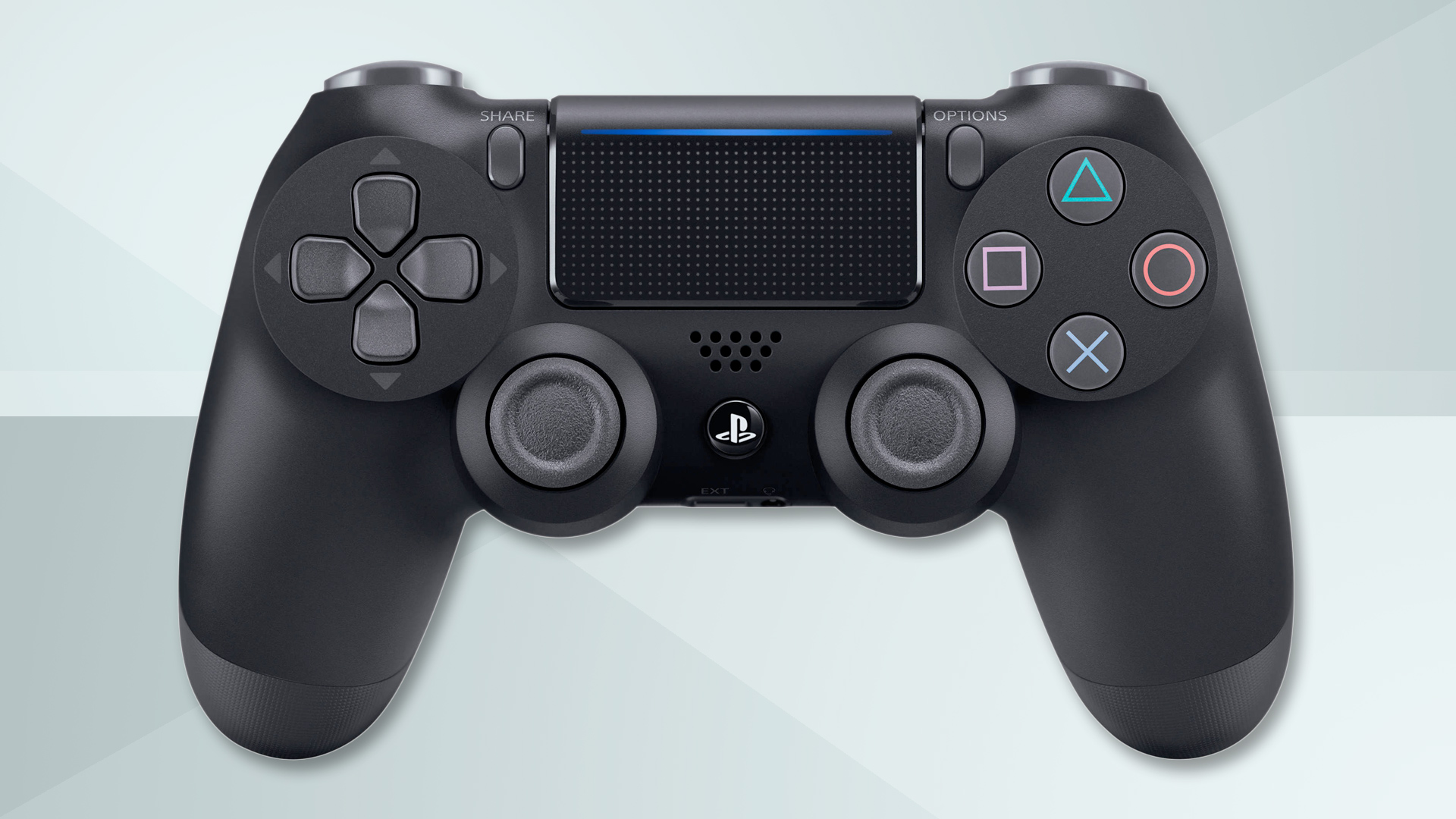
3. Sony DualShock 4 (2013)
The PS3’s controllers were nothing to get too excited about. Sony’s original Sixaxis was the first official wireless, motion-sensing PlayStation controller, but it also killed rumble and felt very light.
It look until the PS4 for Sony to make some dramatic changes. The DualShock 4 has a speaker, motion control-ready light bar, and a touch pad front and centre.
These days it’s easy to forget these elements are there because, after a few early gimmicky applications of the tech, not that many games seem to make use of them.
However, it’s a fantastic all-round pad with more robust lines than older PlayStation pads. The one major issue is that the DualShock 4’s battery life is fairly poor, worse than that of the DualShock 3 and Xbox One pads. All that tech comes at a price, it seems.

2. SNES pad (1990/1991)
No gamepad screams Nintendo more than the SNES pad. The curves, the colorful buttons and that sense of there being nothing that isn’t needed make this a stone cold classic.
Nintendo effectively took what it did with the NES pad, made it more ergonomic and added the buttons needed for the 16-bit generation’s more complicated games. Namely: a pair of shoulder buttons and two extra action buttons in the diamond arrangement just about every gamepad uses to this day.
The SNES pad was the first pad shipped with a console to use shoulder buttons too, letting you press four buttons at once without any awkward, blister-making mashing. It’s easy to think of this as a simple, even basic, controller, but it was more than that.
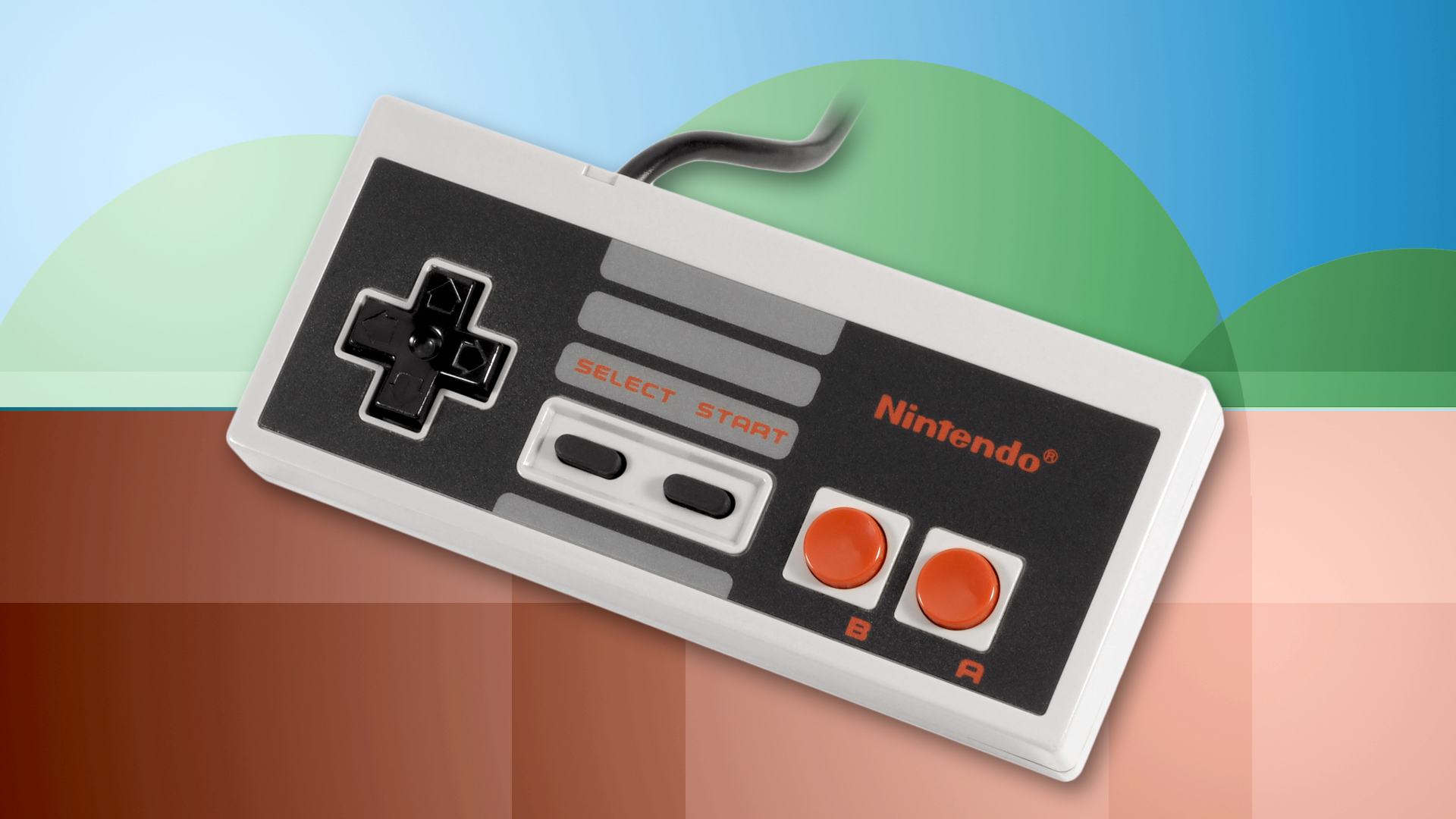
1. NES pad (1985)
For gamers of a certain age, the NES pad will pop up in the imagination as soon as talk of the best controllers ever starts. It was the gamepad that established the design language of the pad we know today, and celebrates its 32nd year in 2017 (outside Japan, where the Famicom version was released even earlier).
It has a look as iconic as the London Tube sign, and much better functionality than the SEGA Master System pad that would all-but copy it shortly after in 1985/1986 (US). That console has a pause button on the console itself rather than the pad: a real head-scratcher even 30 years later.
Its enduring minimalist perfection is cemented by the recent NES Classic Edition console, a $59.99/£49.99 miniature version of the old console with the same pad design. Sure, it’s angular and tiddly by today’s standards, but pick one up and it still feels right.